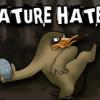When you build a model using triangular meshes, you put the vertexes, faces and edges etc in
the right place as you design the model, but there must be a logical reason to put them there.
One reason is to hold the shapes of the model. But what makes you, perhaps guts feeling, think that
it is the right place? I find most of the models in the public domain have triangles scattered around.
I don't understand the logic behind.
Could you give me some hints?
I am not trained to be an artist, I am basically a programmer. But I am interested in learning drawing painting and stuff
Thanks
Jack








